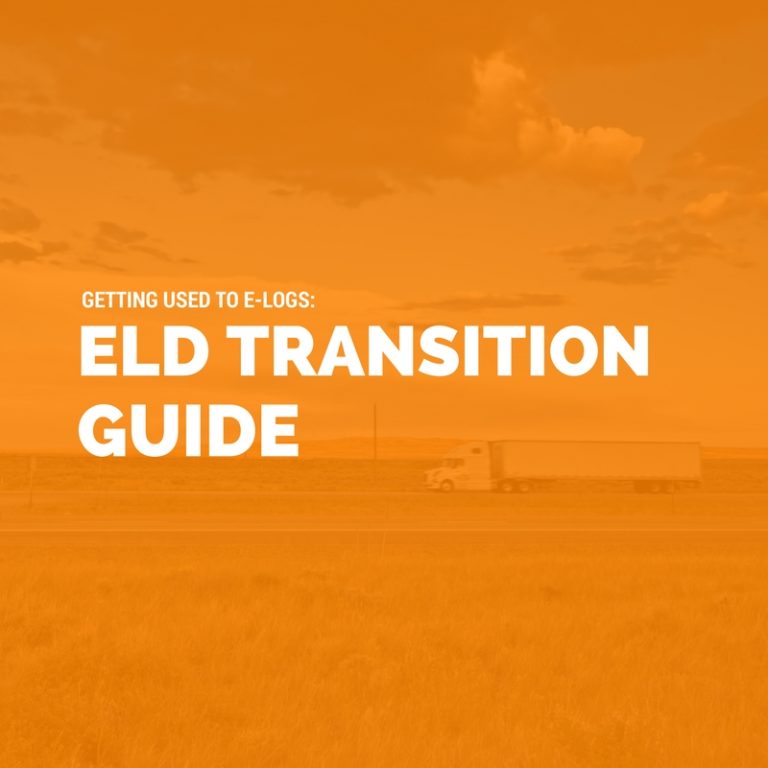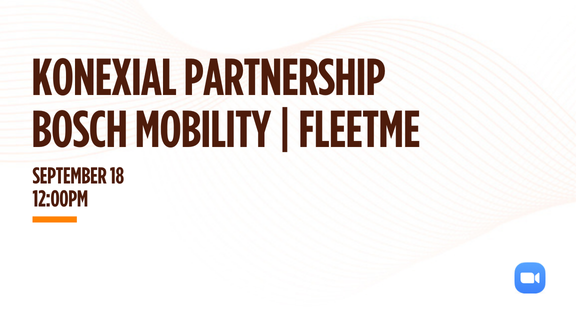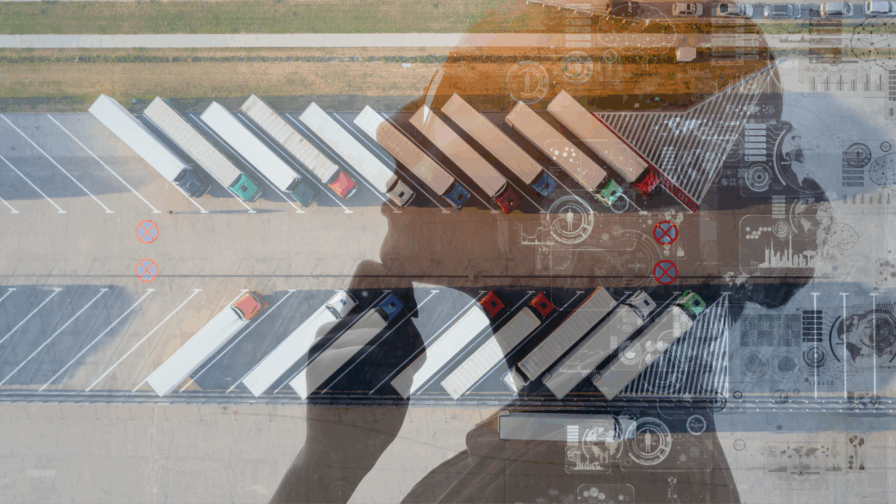ELD Transition Guide: Getting Used to E-Logs

Getting Used to E-Logs: ELD Transition Guide
Transitioning from paper logs to e-logs can be an easy process, especially when you and your team take the time to learn how to use ELDs — and make them work for you!
A great way to start teaching yourself and your drivers about how to use ELDs is to first understand why you shouldn’t be afraid of ELDs and ELD features beyond HOS logging, including our very own GoLoad load-matching service that pushes load opportunities (and extra income opportunities) directly to your phone. Next, it’s important to create an ELD transition plan that helps you and your drivers succeed. A successful ELD transition starts with a great e-log device and provider and continues with understanding the tips presented in this ELD transition guide.
Find a Great ELD Provider
While there are many ELD providers and systems on the market, it’s important to find an electronic logging device that’s FMCSA compliant, works with your budget, and has your company’s or fleet’s best interest at heart. The My20 ELD (great for owner operators) and My20 Tower (perfect for fleets), by ELD provider Konexial, fit all of those requirements. Along with being a FMCSA compliant ELD, our affordable ELD offers remarkable ELD benefits that aren’t found with other ELD providers on the market: GoLoad (find extra loads and eliminate driving empty miles) and GoFuel (maximize your bottom line with driver rewards). Finally, our heart is with truck drivers; we truly believe in helping American truck drivers succeed and improve their lives — it’s the backbone of everything we do at Konexial. For us, meeting that desire starts with creating an easy-to-use, high-tech, and affordable ELD.
A successful ELD transition starts with a great electronic logging device. Buy your ELD here, then start training your drivers with our ELD training tips.
ELD Training For Drivers and Fleets
A structured ELD training plan and routine will help ensure that you and your drivers successfully learn how to use your ELD to its fullest potential. Start by finding an ELD provider as soon as possible, as the ELD mandate deadline will be here before you know it (December 18, 2017)! Securing your electronic logging device right now will give you and your drivers more time to smoothly transition from paper logs to e-logs, which ultimately means less stress and confusion for you and your team! If you’re an owner-operator or fleet owner, conducting ELD training with the My20 ELD or My20 Tower is easy. Simply download the My20 ELD app, install the ELD hardware to your diagnostic port, link the My20 ELD to your smartphone via Bluetooth, and you’re ready to go. Once you’re ready to use the My20 ELD and/or My20 Tower, the following ELD training tips shouldn’t be missed:
ELD Training for Compliance Managers, Administrative Staff, and “Super-Users”
ELD training for those who will be teaching and supporting drivers throughout the ELD on-boarding process is a critical aspect of making sure your entire fleet can successfully transition to ELDs. Your ELD “super-users,” or those within your fleet who are teaching and supporting your drivers, should be your ELD experts. That means they should be able to answer ELD questions, navigate the My20 ELD app, find loads on GoLoad, and help drivers through the ELD transition process. They should also understand the ins-and-outs of vital aspects of the ELD transition process, such as: ELD compliance requirements, ELD supporting document requirements, ELD operation, proper editing of records, ELD data retention, understanding and preventing harassment and coercion, and ELD troubleshooting. If your ELD super-user, fleet manager, or administrative staff needs help getting started with the My20 app and hardware, check out our ELD FAQ page or contact us.
ELD Installation and Testing, Including Creating User Accounts
With the My20 ELD, installation and testing your ELD is easy. Simply download the My20 ELD app, install the ELD hardware to your diagnostic port, link the My20 ELD to your smartphone via Bluetooth, and you’re ready to go. After that, you and your fleet can begin creating user accounts, on the My20 app, for all of your ELD users.
ELD Training For Drivers
A successful ELD transition begins and ends with your drivers. Make sure they are prepared to use their ELD before they hit the road. When it comes to ELD training for drivers, fleets and owner-operators should provide the following:
- ELD Orientation Training
- Refresher ELD Training
- Individual Training to Address Common Mistakes
- On-the-Road Preparation: How to Successfully Address ELD Questions, ELD Malfunctions, and DOT Inspections
- An Understood ELD Communication Plan: How will drivers ask ELD questions and how will those questions be answered in a timely manner? Will that be through a super-user, weekly meetings, messaging through the My20 app, or something else?
Properly training yourself and/or your drivers on how to use your ELD is crucial to alleviating any stress or confusion during the ELD transition process. Along with reading your ELD user guide, FMCSA recommends that all drivers successfully accomplish the following ELD tasks:
- Log In
- Respond to Unassigned Driving Hours the ELD Records
- Record Duty Status Changes
- Edit Records
- Add Notes to Records to Explain Any Edits or Additions
- Certify Records (Indicating They Are Complete and Accurate)
- Access RODS Data from the ELD
- Review and Understand the ELD Printout or Display Information
- Transfer ELD Data by Email or Bluetooth to Inspectors or Law Enforcement
- Identify and Correct or Report Data Diagnostic Issues
- Report ELD Malfunctions
If you’re using the My20 ELD, you can find answers to many of these questions here. And, don’t forget to train your drivers how to use GoLoad so that they can pick up extra loads (and income) on their route!
Understanding Driver Harassment, Plus How to Report It
ELDs protect drivers from driver harassment as soon as they begin using their ELD. As an important benefit of ELDs, understanding driver harassment — for both drivers and carriers — is an important piece of the ELD transition puzzle. FMCSA defines driver harassment as: “a carrier using ELD data [“or information available through connected technology”] to pressure a driver to take action that results in an HOS violation or to drive when ill or fatigued.”
While carriers and drivers should both understand exactly what driver harassment is, carriers should also understand the penalties for harassment, and drivers should know how to report it. Drivers must report driver harassment or coercion within 90 days to the National Consumer Database or with the FMCSA Division Administration for the state in which the driver is employed.
ELD User Documentation Requirements (Must Be Kept in Vehicles)
A successful transition from paper logs to electronic logging devices should also factor in the need to understand your ELD user document requirements. Starting December 18th, 2017, on the ELD mandate deadline, the following ELD user documents are required to be in vehicles at all times:
- ELD User’s Manual
- Instruction Sheet for Transferring HOS Records to Safety Officials
- Instruction Sheet on Reporting ELD Malfunctions and Record-keeping Procedures During ELD Malfunctions
- At Least an 8-Day Supply of Paper Tracking Forms (Grid Graphs), In Case of ELD Malfunction
ELD Supporting Document Retention
On the ELD mandate deadline (December 18th, 2017), carriers and drivers must retain ELD supporting documents (in paper or digital format) to verify HOS compliance. To meet this requirement, drivers must submit ELD supporting documents to their motor carrier (within 13 days of the document being generated), and motor carriers must retain no more than eight ELD supporting documents for each driver, for each 24-hour period. Carriers must retain ELD supporting documents for 6 months (digital versions are accepted). Learn more about ELD supporting documents here.
ELD Data Retention
Starting December 18th, 2017, carriers are required to retain ELD data and backup data on separate systems. ELD data must be backed up for at least 6 months, and it must be securely stored in order to protect driver privacy.
ELD Transitions Made Easy
While the My20 ELD is an easy-to-use ELD, we understand that transitioning to ELDs is still going to take some time to master. Make your ELD transition easy — and successful — by following the seven ELD tips above, but don’t forget to ask your ELD provider any lingering ELD questions. At Konexial, we’re here to help you and your team make the ELD transition a successful one. If you should ever need any assistance from us, please reach out to us with any issues or questions.







